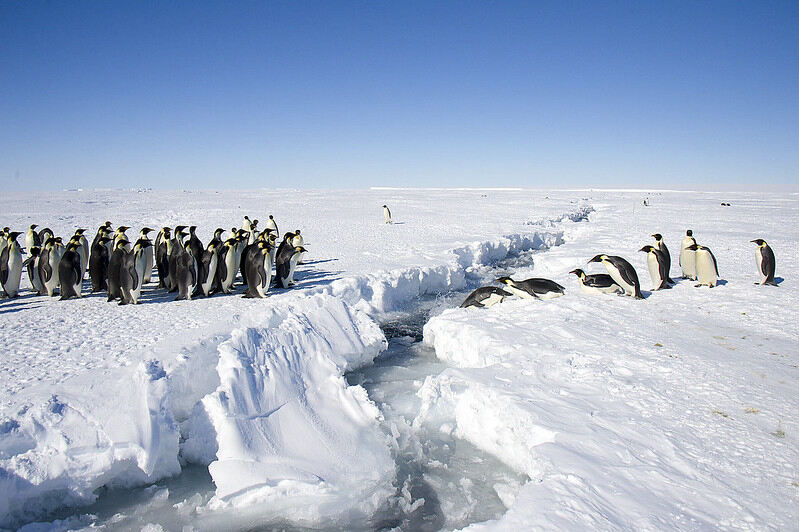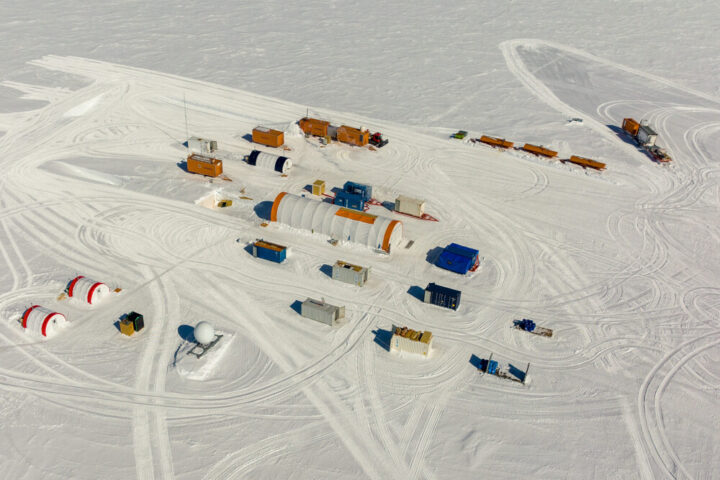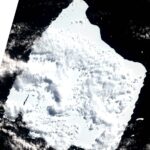One of the challenges of the 21st century is climate change. It has affected all of us. Even Antarctica – the continent of extremes and contradictions – tells the story of how climate affects life on Mother Earth. Over a hundred thousand tourists visited this cold continent last year.
Emperor penguins saw the largest die-off on record. Sea ice reached a new low – the 4th new low in 7 years. The world’s largest iceberg – about 4 times the size of the Indian capital – is currently drifting. It is melting into the Southern Ocean. It has been a rapid slide for the continent of ice. It was expanding until 2014. But there are cracks in the ice since then. There is a continental shift. There is a crumbling at the edges of this continent.
Humans began exploring Antarctica about 200 years ago. Nearly a century later, Anglo-Irish explorer Ernest Shackleton famously set out to be the first to trek across Antarctica, via the South Pole. His ship, the Endurance sank in the Wendell Sea in 1915. It left him and his crew camped on ice for over 5 months. Luckily all the crew members survived.
Now the scientists have found that warming was somewhat milder in the tropics and much higher at the poles. Atmospheric rivers – belts of moisture that can be hundreds of kilometres wide – can cause sudden changes of weather. The polar region is protected from these rivers by the polar vortex. Partly due to global warming and the ozone hole, this vortex is weakening in places. The heat wave of March 2022 raised temperatures to -9.4 degrees Celsius in Antarctica.
Amid the warming and consequent melting, the world’s largest iceberg is moving north, along Iceberg Alley. Antarctica’s floating ice shelves have been shedding icebergs faster than the ice can be replaced, owing to warming ocean waters. Sea ice disappearing too early wiped out four of five emperor penguin colonies in December 2022. About nine thousand hits died in all in the first such regional mass die-off on record. Almost a third of emperor penguin colonies across Antarctica were affected by early sea ice loss in 2022.
Ice cores, extracted from Antarctica, are revealing historical records. What they tell us about our recent past is dramatic. Carbon dioxide levels began to rise, driven by global changes in land use, linked to new patterns of agriculture and livestock farming in 1750. These levels reached 280 parts per million (ppm) near their existing peak in the eight hundred thousand-year history represented by the ice cores in 1765. Lead pollution linked to Australian lead mining and industrial activity is detected in 1889. An increase in sulphites is detected, and linked to the spread of coal-fired power plants globally in 1900. Carbon dioxide concentrations reach 300 ppm, surpassing the pre-existing high in 1915. An increase in nitrates is detected and linked to the spread of cars and oil-fired power plants in 1950. Radioactive by-products are detected and attributed to nuclear tests in 1954.
Similar Posts
Lead levels rise and they are linked to additives in automotive fuel during 1950-1980. Atmospheric radioactivity signatures peak, then fall sharply in the years following the wake of the 1963 Nuclear Test Ban Treaty, which banned all above-ground testing during 1964-65. Methane concentrations reach double the pre-industrial peak represented in the ice cores in 1970. Traces of DDT, used widely as an insecticide at this time, appear in 1975. Lead levels begin to fall, reflecting the switch to unleaded petrol in 1980. Carbon dioxide concentration reaches 400 ppm, nearly 1.5 times greater than the pre-industrial levels in the core in 2016.
The above history of about 275 years of humanity shows the impact of human activity. It reinforces a heartening truth: That damage can be undone, and actions can make a difference. In short, over one hundred thousand tourists visited Antarctica last year. Emperor penguins saw the largest die-off on record. Sea ice reached a new low. The world’s biggest iceberg – about 4 times the size of Delhi – is currently drifting. It will melt into the Southern Ocean. It has been a rapid slide for the continent of ice, which was expanding until 2014. Only the willpower of humanity can avert the disaster in the form of climate change that is affecting Antarctica.


















